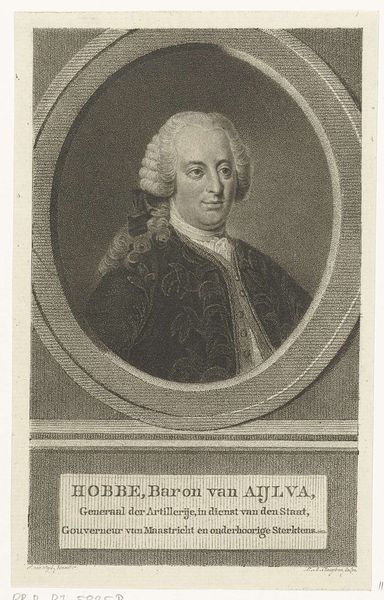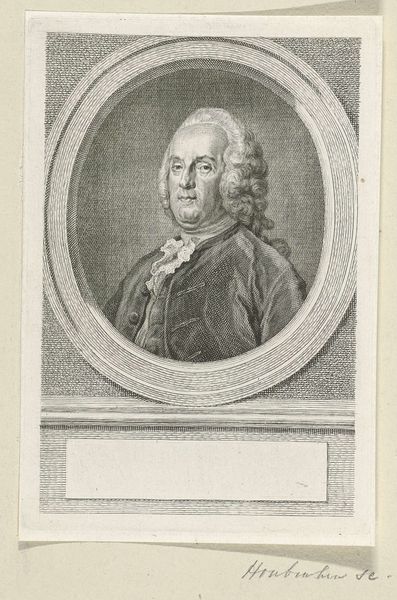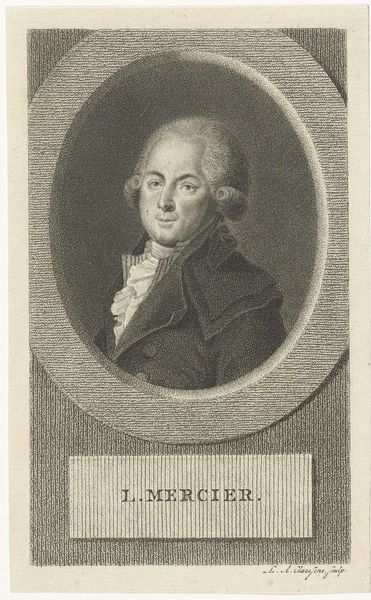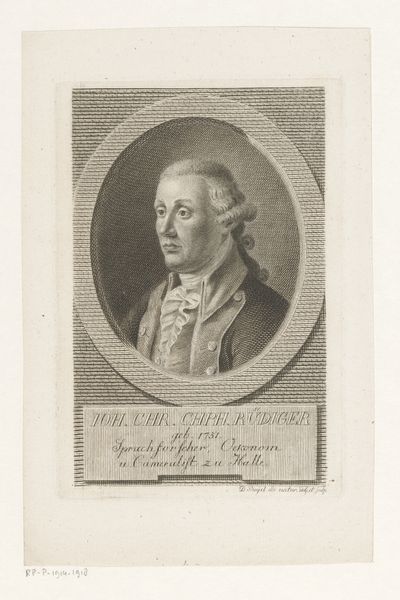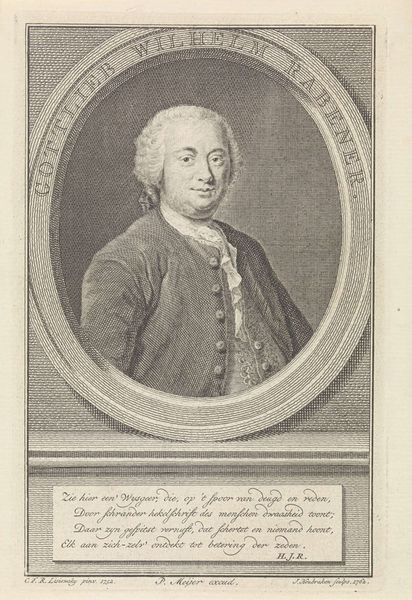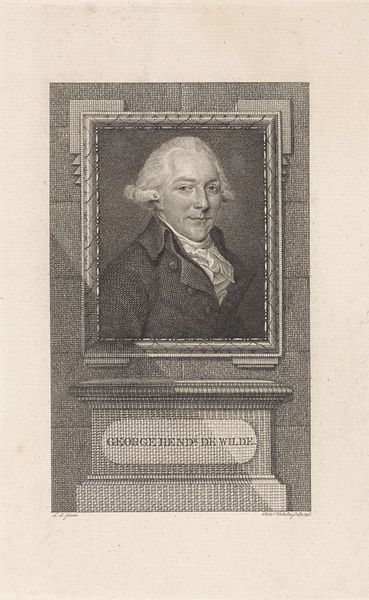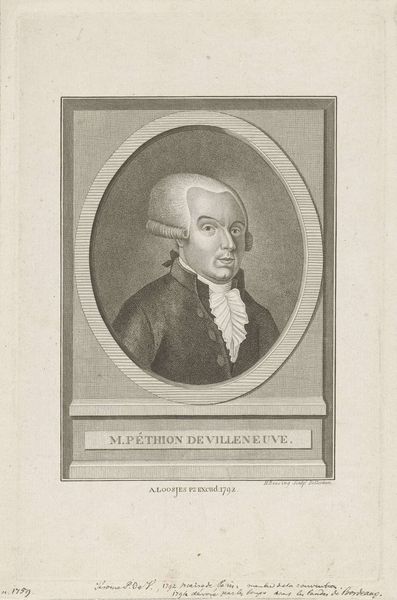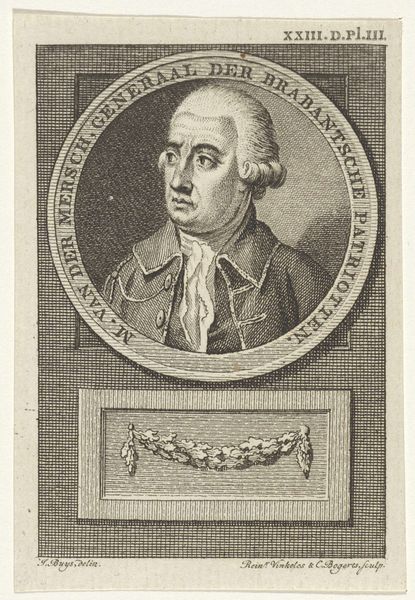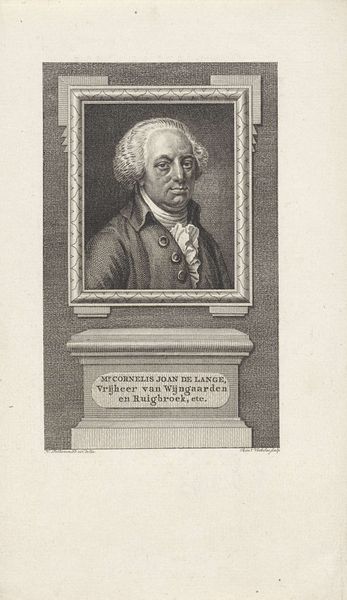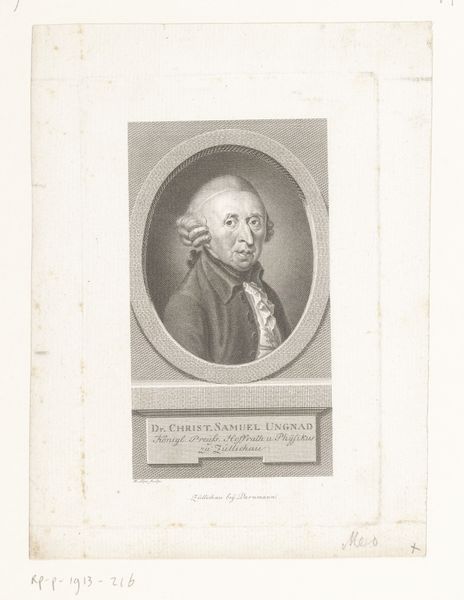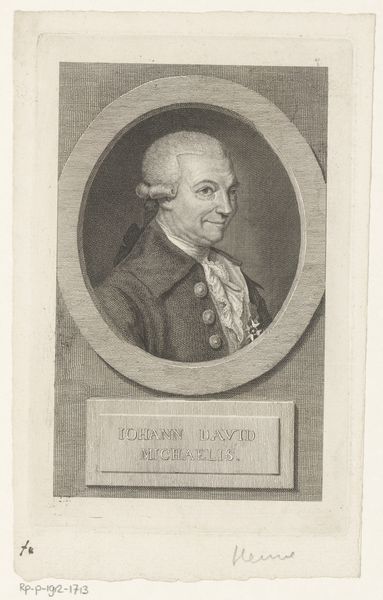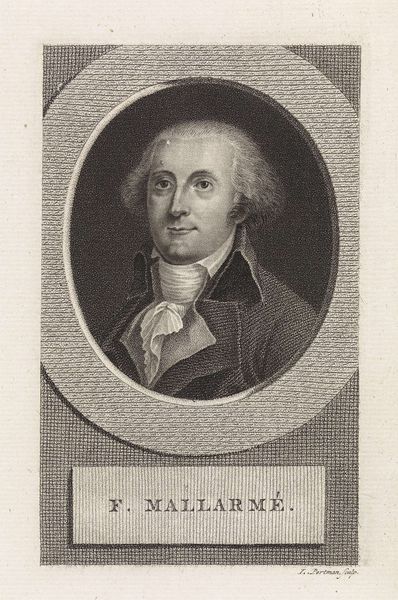
engraving
#
portrait
#
neoclacissism
#
old engraving style
#
historical photography
#
history-painting
#
engraving
#
realism
Dimensions: height 233 mm, width 136 mm
Copyright: Rijks Museum: Open Domain
Curator: This is a portrait of Gerard Meerman, created between 1792 and 1808 by Lambertus Antonius Claessens, using engraving. Editor: There's a stillness about this engraving. It's dignified, certainly, but also quite contained. Almost like he’s presenting himself in a very specific, controlled manner. Curator: The technique, engraving, would have demanded that control. It’s a laborious process, etching lines into a metal plate. It implies a level of precision and deliberation about image production far removed from, say, a sketch. Every line would have mattered. Editor: Exactly, and each line also builds up into symbolic representation. The oval frame around him suggests prestige and permanence, almost a classical medallion. The lettering below seems to underscore the man's social standing: "Raad en Pensionaris der Stad Rotterdam." Words as symbols of authority. Curator: And note the visual language of Neoclassicism – the idealized form, the emphasis on line and order. The production and consumption of portraits like these reinforced social hierarchies. Meerman’s position within Rotterdam was inextricably linked to his patronage of such imagery. The choice of engraving is also key – consider its capacity for widespread distribution; to imprint, control, and communicate a specific identity throughout the city. Editor: You see that, but I also see his lace cravat – a signifier of wealth and refinement—it is juxtaposed against that quite stark, almost severe portrait style. He seems to be striving for something beyond mere material wealth – recognition, perhaps lasting fame, beyond the material world? A kind of secular saint preserved for posterity. Curator: That might be a reading of it. I lean more toward acknowledging it as a construction deeply rooted in material concerns: in wealth and in access. Editor: I see what you're saying, and it really boils down to what we choose to emphasize when we encounter these portraits – the social context and production of an era… Curator: Or its enduring symbolic weight, its lasting impression across history. Both aspects can teach us a lot.
Comments
No comments
Be the first to comment and join the conversation on the ultimate creative platform.
